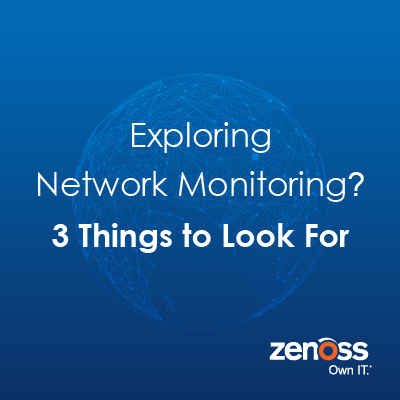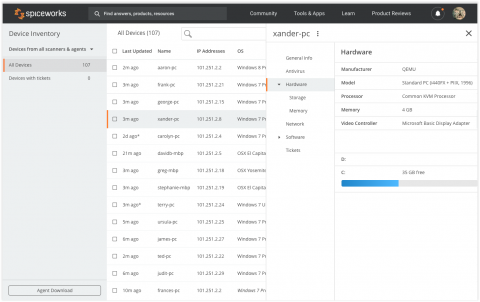Operations | Monitoring | ITSM | DevOps | Cloud
Latest News
Machine Learning CAN Help Your NOC Win the Battle
Rapidly increasing IT complexity, customer expectations around application availability and performance, and the importance of supporting new digital initiatives and services, taken together, are placing unprecedented demands on Network Operations Centers (NOCs) and IT Operations teams inside large, complex organizations like yours.
EC2 Packets per Second: Guaranteed Throughput vs Best Effort
Remember the customer who reported a hard-coded packet per second (PPS) limit in AWS? His use case was a reverse-proxy server to a very active database cluster, complete with heartbeats, keep-alive connections, and a heavy load of queries and traffic. When the network throughput was sustained for an hour or so, the throughput would drop despite increasing demand.
How Many Packets per Second (PPS) in Amazon EC2?
A customer of ours reported a limit on number of packets in Amazon’s EC2 instances. According to the report, it didn’t happen on all instance types, and didn’t happen all the time. Also, it was unrelated entirely to bandwidth or MTU. According to the report, packet transmission rates were limited the same as CPU on t2/t3 instances — each instance earns credits which, when exhausted, cause throttling.
Exploring Network Monitoring? 3 Things to Look For
Spiceworks Adds Free Network Inventory Application to its Suite of Integrated Cloud-based Solutions
AUSTIN, Texas — October 9, 2018 — Today at SpiceWorld 2018, Spiceworks announced a new cloud-based Spiceworks Inventory application that integrates with the cloud editions of Spiceworks Help Desk and Spiceworks Remote Support to help IT professionals more intuitively manage their technology assets and support end users from a single, easy-to-use ecosystem.
How to add Solarwinds nodes to your Enterprise Applications
Today we welcome David Morris, a System Centre Engineer for one of the world's largest law firms, who has written a special guest blog about the Solarwinds community MP. A must read for anyone who has Solarwinds and Microsoft System Center Operations Manager (SCOM). We'd like to thank David for taking the time to write up this fantastic piece of content - it's another great example of the SCOM community hard at work.
How to integrate PRTG with Squared Up
“What kind of integrations do you have with PRTG?” Yesterday, one of our favourite German customers asked us that question. And today we post our answer in a blog post! And without further ado, we’ll let our technical colleague Tom Morriss take centre stage.
Simplifying security auditing, part 5: Detecting network attacks
Anyone trying to access resources in your network needs to interact with your network devices: firewalls, routers, switches, and IDS/IPSs. Each of these devices generate syslogs that contain important security information and must be audited to gain complete visibility into the activities occurring in your network. Most SIEM solutions, including our own Log360, can collect and analyze syslogs in real time and instantly alert security teams if any security event of interest occurs.
LPWAN as a communication base for IoT
LPWAN (Low Power Wide Area Network), also known as LPWA or LPN, is a wireless data transport protocol that is now understood as one of the basic protocols for the implementation of IoT. In order to have a better idea of the relevance of LPWAN we can consider the prediction made by statisca.com of a steady increase in the number of LPWAN devices connected around the world, expecting this number to reach around 3.5 billion devices by 2021.









